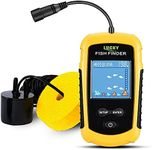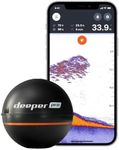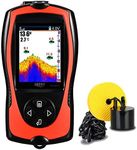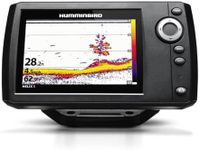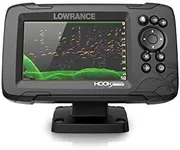Buying Guide for the Best Portable Fish Finders
Choosing a portable fish finder can make your fishing trips more productive and enjoyable by helping you locate fish and understand underwater structures. The right model for you depends on where and how you fish, as well as how much information you want at your fingertips. When shopping, focus on the main features that affect performance and usability, and think about your typical fishing environment—whether that's from a boat, kayak, or the shore.Transducer TypeThe transducer is the part of the fish finder that sends and receives sonar signals. It's important because it determines how well the device can 'see' underwater. There are different types, such as portable suction cup transducers, castable transducers, and those designed for ice fishing. Portable and castable types are best for flexibility and ease of use, especially if you fish from different spots or move around a lot. If you fish from a kayak or small boat, a suction cup or clamp-on transducer is convenient. For shore fishing, a castable transducer that you can throw into the water is ideal.
Display Size and QualityThe display shows you the underwater information, so its size and clarity are important for easy reading. Displays range from small, basic screens to larger, color ones. Small screens are more compact and easier to carry, but can be harder to read, especially in bright sunlight. Larger, color displays are easier to interpret and show more detail, but they can be bulkier. If you want portability above all, a smaller screen may be fine, but if you value clear visuals and plan to use the device often, a larger, high-quality display is worth considering.
Sonar FrequencySonar frequency affects how much detail you see and how deep the fish finder can scan. Lower frequencies (like 50 kHz) go deeper but show less detail, while higher frequencies (like 200 kHz or more) give more detail but don't reach as deep. Some fish finders offer dual or multiple frequencies, letting you switch based on your needs. If you fish in shallow waters or want to see more detail, choose a higher frequency. For deeper lakes or rivers, a lower frequency is better. If you fish in a variety of places, a model with multiple frequencies gives you flexibility.
Portability and Power SourcePortability is key for a device you'll carry to different fishing spots. Some fish finders are very compact and run on standard batteries, while others have rechargeable batteries or need to be plugged in. Battery life is important if you'll be out for long periods. If you move around a lot or fish in remote areas, look for a lightweight model with long battery life or easy-to-replace batteries. If you fish from a boat with power access, you have more options.
Depth CapabilityDepth capability tells you how deep the fish finder can scan. This is important because it determines whether the device will work in the waters you fish. Shallow-water fishers don't need a high depth rating, but if you fish in deep lakes or rivers, make sure the device can reach those depths. Check the maximum depth listed and match it to your usual fishing spots.
GPS and Mapping FeaturesSome portable fish finders include GPS and mapping features, which help you mark fishing spots, navigate, and track your route. This is useful if you like to return to the same locations or explore new areas. If you fish in unfamiliar waters or want to keep records of your best spots, look for a model with built-in GPS. If you just want to find fish and don't need navigation help, you can skip this feature.

